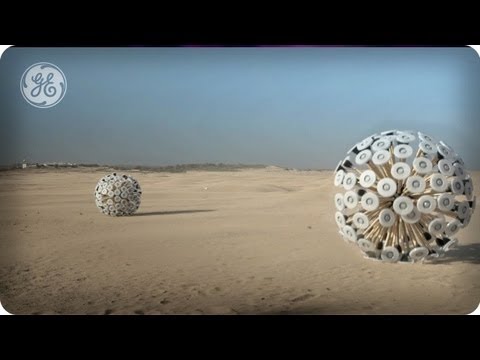Massoud Hassani was born in Afghanistan and came to Holland as a refugee when he was a child.
Remembering his boyhood passion of building toys and sculptures from materials he and his friends would find, he became a product designer, studying at the Design Academy Eindhoven.
Inspired to solve the problem of landmine maiming and fatalities both in Afghanistan and in other war torn countries, he has created a cheaply made, wind powered device to help clear minefields and make the countryside safer for children and farmers.
The Mine Kafon is approximately 6 feet high, and is a 17kg cast iron casing surrounded by dozens of bamboo legs, each with a plastic foot at the end, somewhat resembling a cross between a giant tumbleweed and a futuristic dandelion.
The device is heavy enough to detonate a landmine, but light enough to move only powered by the wind. A detonation will only remove one or two of the ‘legs’, giving the ability to destroy several landmines before needing to be repaired.
Inside the casting is a GPS unit to track where the device has travelled, allowing users to track where mines have been cleared and where the safe areas of a minefield are.
Landmines are a huge problem in countries with histories of modern warefare, with countries such as Afghanistan and Laos being among the highest concentrations in the world. Deaths, amputations and maimings from Landmine accidents are sadly commonplace in these countries.
In addition to this, clearing landmines is very expensive, and the countries who have the biggest problems with landmines are among the world’s poorest.
Hassani’s Mine Kafon device costs around 40 euros to build, and can clear multiple landmines, while the traditional cost of clearing a single landmine can be ten times that cost. Additionally, UN statistics state that for every 5000 landmines cleared, one landmine specialist is killed and two injured.
Hassani hopes his device can save billions in not only removals, but also the carry on cost of death and destruction caused by landmines, and then the money saved can be reinvested in these poor countries infrastructure, schools and hospitals.
